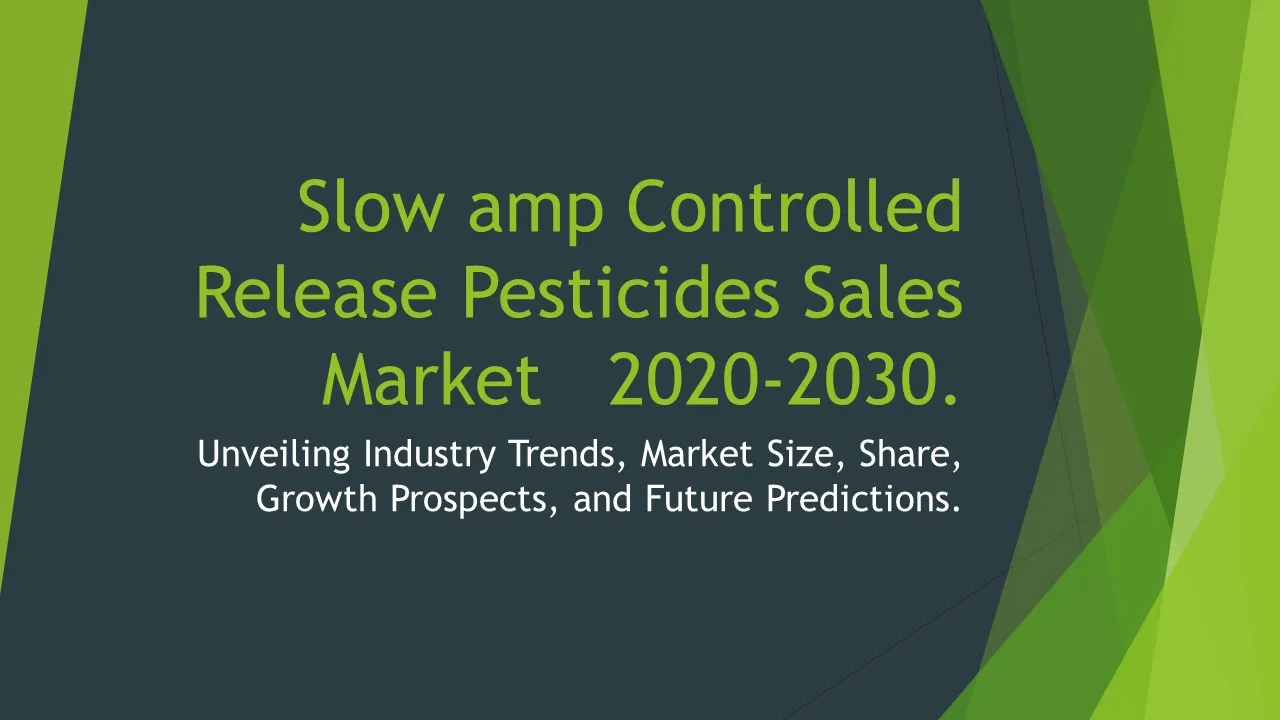Agricultural Plant Growth LED Lights Sales
Agricultural Plant Growth LED Lights Market Segments - by Product Type (Top-Lighting, Inter-Lighting, Sole-Source Lighting, LED Grow Light Bars, LED Grow Light Panels), Application (Greenhouses, Indoor Vertical Farms, Research Labs, Turf and Landscaping, Other Crops), Distribution Channel (Online Stores, Specialty Stores, Direct Sales, Distributors, Others), Light Spectrum (Full Spectrum, Red Spectrum, Blue Spectrum, White Spectrum, Far Red Spectrum), and Region (North America, Europe, Asia Pacific, Latin America, Middle East & Africa) - Global Industry Analysis, Growth, Share, Size, Trends, and Forecast 2025-2035
- Report Preview
- Table Of Content
- Segments
- Methodology
Agricultural Plant Growth LED Lights Sales Market Outlook
The global Agricultural Plant Growth LED Lights market is projected to reach approximately USD 4.5 billion by 2035, with a compound annual growth rate (CAGR) of around 18.5% from 2025 to 2035. The increasing adoption of vertical farming and greenhouse agriculture is a primary growth factor for this market, as it offers efficient, sustainable solutions to food production challenges. Technological advancements in LED lighting technology, coupled with the growing trend of urban gardening and the need for energy-efficient lighting solutions, are expected to further drive the market's growth. Additionally, the increasing awareness of the benefits of LED lights over traditional lighting systems in agricultural settings is fostering significant market expansion. The forecast period anticipates a surge in demand for advanced LED lighting solutions, influenced by the need for higher crop yields and better energy management in agriculture.
Growth Factor of the Market
One of the most significant growth factors for the Agricultural Plant Growth LED Lights market is the increasing global population, which necessitates the need for more efficient agricultural practices to ensure food security. The shift towards controlled environment agriculture (CEA), such as indoor vertical farming and greenhouse cultivation, has dramatically increased the demand for specialized lighting solutions that will enhance plant growth and quality. Additionally, the advancements in LED technology, which provide better light penetration and spectrum control, have made these lights more attractive to agricultural producers. Furthermore, the rising cost of electricity and the push for sustainable farming practices are encouraging producers to switch from traditional lighting systems to energy-efficient LED solutions. The growing trend of urban farming and gardening, driven by environmental consciousness and the desire for local produce, is also propelling the market forward. Collectively, these factors create a robust environment for growth in the Agricultural Plant Growth LED Lights market.
Key Highlights of the Market
- The market is expected to achieve a CAGR of 18.5% during the forecast period.
- North America is anticipated to hold a significant market share due to the rise of indoor vertical farms.
- Technological advancements in LED light spectrums are enhancing crop production efficiency.
- Online sales channels are projected to witness the highest growth rates in distribution.
- Increased investment in research and development is fostering innovation in LED lighting solutions.
By Product Type
Top-Lighting:
Top-lighting refers to the positioning of LED lights above the crops, providing uniform light distribution to a wide area. This type of system is particularly effective for large-scale farming operations, including greenhouses and indoor farms, as it maximizes light exposure and supports the growth of a variety of crops. The technology allows for the integration of different light spectrums that can be tailored to the specific growth stages of plants. By using top-lighting systems, farmers can achieve significant energy savings while optimizing the photosynthesis process of plants, which directly influences yield quality and quantity. The growth in urban farming and the trend towards sustainable agricultural practices are boosting the adoption of top-lighting solutions, making it a prominent segment in the market.
Inter-Lighting:
Inter-lighting systems are designed to be placed within the crop canopy, effectively providing light to lower leaves that would typically be shaded by upper foliage. This system is particularly beneficial for high-density crops that require light penetration at all growth levels. Inter-lighting is gaining traction as it significantly improves light distribution and enhances plant growth, leading to an increase in overall crop yield. The technology allows for customized light spectrums that can cater to specific plant needs, further optimizing growth conditions. As the agricultural sector continues to innovate and seek ways to improve efficiency and productivity, inter-lighting systems are becoming increasingly popular among professional growers.
Sole-Source Lighting:
Sole-source lighting systems are those where LED lights are the only source of illumination for plant growth. This type of setup is predominantly utilized in indoor farming and research labs, where controlled environmental conditions are a priority. Sole-source lighting allows for precise control over light intensity, spectrum, and duration, enabling cultivators to replicate natural sunlight conditions for optimal growth. The growing demand for indoor farming solutions, driven by urbanization and limited arable land, is contributing to the increasing popularity of sole-source lighting systems. Furthermore, advancements in LED technology are providing more efficient and effective lighting solutions for these applications, making them an essential component of modern agricultural practices.
LED Grow Light Bars:
LED grow light bars are a popular choice among commercial growers due to their scalability and versatility. These bars can be easily installed in various configurations, making them suitable for diverse growing environments, including greenhouses and indoor farms. Their design allows for even light distribution and the flexibility to customize light spectra for specific plant growth stages. As growers increasingly prioritize energy efficiency and sustainability, LED grow light bars are becoming a favored option, contributing to reduced energy costs while still delivering high-quality light for plant growth. The market is witnessing a surge in demand for these products, driven by the necessity for efficient agricultural lighting solutions.
LED Grow Light Panels:
LED grow light panels are flat, energy-efficient lighting solutions that are ideal for a wide range of agricultural applications. These panels are designed to deliver uniform light coverage across the plant canopy, ensuring that every part of the plant receives adequate light for photosynthesis. They are particularly useful in indoor vertical farming and commercial greenhouses, where maximizing space and yield is crucial. The compact design of LED grow light panels allows them to be easily integrated into existing setups, making them a practical choice for many growers. The increasing focus on sustainable agricultural practices is leading to a rise in the adoption of LED grow light panels, as they offer significant energy savings compared to traditional lighting systems.
By Application
Greenhouses:
Greenhouses are one of the primary applications for Agricultural Plant Growth LED Lights, as they provide a controlled environment that enhances plant growth while allowing for year-round cultivation. The integration of LED lighting in greenhouses allows for better control over growing conditions, such as light intensity and spectrum, which can be adjusted according to the specific needs of the crops. This flexibility leads to improved yields and quality of produce. Moreover, the energy efficiency of LED lights reduces operational costs for greenhouse operators, making it a financially attractive option. The increasing adoption of greenhouse farming techniques is expected to significantly drive the growth of LED lights tailored for these environments.
Indoor Vertical Farms:
Indoor vertical farms utilize multi-layered growing techniques, relying heavily on artificial lighting systems to simulate natural sunlight. LED lights play a crucial role in this application, as they provide the necessary light spectrum for plant growth while consuming less energy compared to traditional lighting systems. The ability to control light conditions precisely allows for optimal growth rates and crop quality, which is essential in these high-density farming setups. As urban areas continue to grow and the demand for locally sourced produce increases, the adoption of LED technology in indoor vertical farms is anticipated to rise significantly, further propelling market growth.
Research Labs:
Research laboratories utilize Agricultural Plant Growth LED Lights for various studies related to plant biology, genetics, and agricultural technology development. These lights allow for precise control of environmental conditions, which is essential for conducting experiments that require specific light conditions. The growth of research and development activities in agricultural technology and the increasing focus on sustainable farming practices are driving the demand for LED lights in research settings. Additionally, LEDs are preferred due to their energy efficiency and longer lifespan, which reduces the overall costs associated with lighting in research facilities.
Turf and Landscaping:
The turf and landscaping application of LED lights is gaining traction as more landscape architects and horticulturists realize the benefits of using specialized lighting for plant health and growth. LED lights can enhance the aesthetic appeal of landscapes while providing the necessary light for turf health, especially in shaded areas. The ability to control light intensity and spectrum makes LED lights an ideal choice for maintaining vibrant and healthy landscapes. As environmental sustainability continues to be a priority, the adoption of LED technology in turf and landscaping applications is expected to grow, contributing positively to the overall market.
Other Crops:
Beyond the mainstream applications of greenhouses and vertical farms, Agricultural Plant Growth LED Lights are also being utilized for various other crops, including specialty plants and ornamentals. This includes flowers, herbs, and fruits that require specific lighting conditions for optimal growth. The adaptability of LED lights allows growers to cater to the unique requirements of these crops, enhancing growth rates and product quality. As the market for specialty crops expands, the demand for tailored LED lighting solutions is also anticipated to grow, providing further opportunities for market expansion.
By Distribution Channel
Online Stores:
The online retail channel is rapidly becoming a dominant force in the distribution of Agricultural Plant Growth LED Lights. With the convenience of e-commerce and the increasing trend of remote shopping, more consumers and businesses are turning to online platforms for their agricultural lighting needs. Online stores offer a wide range of products, detailed specifications, and customer reviews, which help buyers make informed decisions. The competitive pricing and availability of exclusive online deals further enhance the popularity of this distribution channel. As more agricultural producers embrace digital purchasing methods, the online segment is expected to witness robust growth in the coming years.
Specialty Stores:
Specialty stores provide a focused shopping experience for customers seeking specific agricultural products, including LED lighting solutions. These stores are often staffed by knowledgeable personnel who can offer expert advice and guidance on selecting the right products for particular agricultural applications. The personalized customer service and the ability to physically inspect products before purchase are significant advantages of this distribution channel. As awareness about the benefits of LED lights continues to grow within the agricultural community, specialty stores are projected to remain a vital resource for growers looking for tailored solutions.
Direct Sales:
Direct sales involve manufacturers selling their products directly to end-users, eliminating intermediaries. This distribution method allows for better pricing and more personalized service, fostering strong relationships between manufacturers and consumers. Many LED lighting manufacturers are increasingly adopting direct sales strategies to reach commercial growers and large-scale operations. This method provides significant benefits, such as customized solutions, bulk pricing, and direct customer feedback. As the market evolves, direct sales are expected to play a crucial role in meeting the specific needs of agricultural producers.
Distributors:
Distributors serve as vital intermediaries in the Agricultural Plant Growth LED Lights market, providing a bridge between manufacturers and end-users. By offering a broad range of products from multiple manufacturers, distributors can meet the diverse needs of their clients. They often provide additional services such as technical support and logistics, enhancing the purchasing experience for growers. The role of distributors is particularly important in expanding market reach, especially in regions where direct access to manufacturers may be limited. As the market continues to grow, the distributor segment is projected to experience steady demand.
Others:
This category includes various other distribution channels that do not fit neatly into the aforementioned segments. This may include wholesale markets, cooperatives, or other unconventional sales venues. While the volume of sales through these channels may be smaller compared to online or specialty stores, they still play a crucial role in reaching specific customer segments, particularly in agricultural communities. The diversity of distribution channels allows manufacturers to capture a broader market share and cater to the unique preferences of different customer groups, ensuring comprehensive access to Agricultural Plant Growth LED Lights.
By Light Spectrum
Full Spectrum:
Full spectrum LED lights are designed to replicate the natural light spectrum, providing a balanced mix of wavelengths that support plant growth at all stages. This versatility makes full spectrum lights suitable for various applications, from germination to flowering. The ability to deliver a wide range of wavelengths promotes efficient photosynthesis, resulting in healthier plants and higher yields. As growers increasingly seek lighting solutions that can adapt to the diverse needs of different crops, full spectrum LED lights are expected to gain significant traction in the market.
Red Spectrum:
Red spectrum LED lights are particularly effective for promoting flowering and fruiting in plants. This specific light wavelength enhances plant growth during crucial developmental stages, making it a preferred choice among growers focusing on yield optimization. The targeted use of red spectrum lights can significantly increase production efficiency, leading to more substantial crop yields. With the growing demand for high-quality fruits and flowers, the adoption of red spectrum LED lights is anticipated to rise, driving the overall market growth for agricultural lighting solutions.
Blue Spectrum:
Blue spectrum LED lights are essential for vegetative growth in plants, as they promote chlorophyll production and encourage strong stem development. This type of lighting is especially important during the initial growth stages of crops, where light quality can significantly impact the overall health of the plants. As growers strive to cultivate robust and vigorous plants, blue spectrum lights are becoming increasingly popular in the agricultural sector. The demand for blue light is likely to increase as more growers recognize its importance in achieving optimal growth.
White Spectrum:
White spectrum LED lights offer a balanced combination of wavelengths, providing a natural light appearance ideal for various applications. This type of lighting is particularly useful in settings where visual appearance is a priority, such as retail environments or decorative landscaping. White spectrum lights can effectively support plant growth while enhancing the aesthetics of the environment. As the demand for aesthetically pleasing indoor and outdoor spaces grows, the popularity of white spectrum LED lights is expected to rise within the market.
Far Red Spectrum:
Far red spectrum LED lights play a significant role in regulating plant development processes, including flowering and seed germination. These lights can extend the photoperiod for plants, which is particularly beneficial in controlled environment agriculture. By utilizing far red spectrum lights, growers can manipulate flowering times and improve crop scheduling, leading to better yield management. As the agricultural sector continues to adopt advanced lighting techniques, the demand for far red spectrum solutions is expected to increase, further influencing market growth.
By Region
In North America, the Agricultural Plant Growth LED Lights market is expected to maintain a significant share, driven by the increasing adoption of indoor farming and greenhouse operations. The region's focus on sustainable agricultural practices, alongside advancements in LED technology, is fueling this growth. North America is projected to showcase a remarkable CAGR of around 19% throughout the forecast period as businesses increasingly turn to energy-efficient lighting options. The growth in specialty produce and the demand for locally sourced food will further accelerate the adoption of LED lighting solutions across this region.
Europe is also anticipated to be a prominent player in the Agricultural Plant Growth LED Lights market, with a strong emphasis on innovation in agricultural technology. The region's stringent regulations on energy consumption and waste management are pushing farmers to adopt more energy-efficient solutions, such as LED lights. Furthermore, the growing trend of urban agriculture and indoor farming in European countries is expected to propel market growth. The European market is likely to witness a steady rise in demand, contributing significantly to the global market share.
Opportunities
The Agricultural Plant Growth LED Lights market presents numerous opportunities for growth, particularly in the realm of technological advancements. With ongoing research and development focused on enhancing LED efficiency and light spectrum capabilities, manufacturers have the potential to create innovative products tailored to specific crop requirements. The integration of smart technology, such as IoT compatibility and automation, could significantly enhance the user experience, allowing growers to monitor and control their lighting systems remotely. By investing in these technological advancements, companies can not only improve their product offerings but also cater to the evolving needs of modern agriculture, driving overall market growth.
Another significant opportunity lies in the expansion of urban agriculture and vertical farming initiatives. As populations in urban areas continue to rise, the demand for locally sourced food is becoming increasingly important. Agricultural Plant Growth LED Lights are integral to the success of these farming methods, providing the necessary lighting conditions to optimize plant growth in confined spaces. The growing interest in sustainable food production and the desire for fresh produce in urban settings present a unique opportunity for manufacturers to tailor their products to meet the specific needs of urban farmers. By targeting this emerging market, companies can leverage the demand for innovative lighting solutions and expand their market presence.
Threats
Despite the significant growth potential, the Agricultural Plant Growth LED Lights market faces several threats that could impact its development. The rapid pace of technological innovation poses a challenge for manufacturers, as they must constantly adapt to changing consumer demands and advancements in lighting technology. Companies that fail to innovate or keep pace with the competition risk losing market share. Additionally, fluctuations in raw material prices, particularly for semiconductor components used in LED production, can create financial pressures on manufacturers. These economic factors could lead to pricing challenges, potentially affecting sales and profitability within the market.
Furthermore, the market is also susceptible to regulatory changes and environmental considerations. Governments worldwide are implementing stricter regulations regarding energy consumption and environmental impact, which could affect the production and distribution of Agricultural Plant Growth LED Lights. Manufacturers must navigate these regulations carefully to ensure compliance and avoid potential penalties. Additionally, the increasing focus on sustainable practices may lead to heightened competition among manufacturers, as they vie for market share in a landscape that prioritizes eco-friendly solutions. This competitive pressure could challenge established companies to adapt and innovate continually.
Competitor Outlook
- Philips Lighting
- OSRAM Licht AG
- Illumitex
- GE Lighting
- California LightWorks
- Hortilux Schréder
- Advanced LED Lights
- Valoya
- Grow LEDs
- Black Dog LED
- Kind LED
- Spectrum King Grow Lights
- Epistar Corporation
- LED Grow Lights Depot
- Cree, Inc.
The competitive landscape of the Agricultural Plant Growth LED Lights market is characterized by a mix of established companies and emerging players, each vying for market share in this rapidly evolving industry. Major companies are investing heavily in research and development to create innovative lighting solutions that meet the diverse needs of growers. This competitive environment fosters a culture of innovation, as companies seek to differentiate their products and offer enhanced features that appeal to consumers. Additionally, strategic partnerships and collaborations are becoming increasingly common as manufacturers look to expand their market reach and share technological advancements, creating a dynamic and competitive landscape.
Key players such as Philips Lighting and OSRAM Licht AG are at the forefront of the industry, recognized for their extensive product offerings and commitment to sustainability. Philips, for instance, has been a pioneer in developing energy-efficient LED lighting solutions tailored for agricultural applications, focusing on maximizing crop yields while minimizing energy consumption. Meanwhile, OSRAM has established itself as a leader in providing advanced LED technology, leveraging its expertise to develop innovative products that cater specifically to the agricultural sector. These companies are not only competing on product quality but are also increasingly focusing on customer service and support to enhance the overall buying experience for their clients.
Emerging players, such as Valoya and California LightWorks, are also making significant strides in the Agricultural Plant Growth LED Lights market. Valoya is recognized for its unique approach to LED lighting, specializing in high-quality grow lights designed for specific plant species and growth stages. This specialization has enabled Valoya to carve out a niche within the market, attracting customers looking for tailored solutions. On the other hand, California LightWorks is known for its commitment to research-based innovation, developing products that incorporate the latest scientific findings in plant growth and light spectrum utilization. As these emerging players continue to innovate and expand their offerings, the competitive dynamics of the market will likely evolve, leading to increased product diversity and improved solutions for growers.
1 Appendix
- 1.1 List of Tables
- 1.2 List of Figures
2 Introduction
- 2.1 Market Definition
- 2.2 Scope of the Report
- 2.3 Study Assumptions
- 2.4 Base Currency & Forecast Periods
3 Market Dynamics
- 3.1 Market Growth Factors
- 3.2 Economic & Global Events
- 3.3 Innovation Trends
- 3.4 Supply Chain Analysis
4 Consumer Behavior
- 4.1 Market Trends
- 4.2 Pricing Analysis
- 4.3 Buyer Insights
5 Key Player Profiles
- 5.1 Valoya
- 5.1.1 Business Overview
- 5.1.2 Products & Services
- 5.1.3 Financials
- 5.1.4 Recent Developments
- 5.1.5 SWOT Analysis
- 5.2 Kind LED
- 5.2.1 Business Overview
- 5.2.2 Products & Services
- 5.2.3 Financials
- 5.2.4 Recent Developments
- 5.2.5 SWOT Analysis
- 5.3 Grow LEDs
- 5.3.1 Business Overview
- 5.3.2 Products & Services
- 5.3.3 Financials
- 5.3.4 Recent Developments
- 5.3.5 SWOT Analysis
- 5.4 Illumitex
- 5.4.1 Business Overview
- 5.4.2 Products & Services
- 5.4.3 Financials
- 5.4.4 Recent Developments
- 5.4.5 SWOT Analysis
- 5.5 Cree, Inc.
- 5.5.1 Business Overview
- 5.5.2 Products & Services
- 5.5.3 Financials
- 5.5.4 Recent Developments
- 5.5.5 SWOT Analysis
- 5.6 GE Lighting
- 5.6.1 Business Overview
- 5.6.2 Products & Services
- 5.6.3 Financials
- 5.6.4 Recent Developments
- 5.6.5 SWOT Analysis
- 5.7 Black Dog LED
- 5.7.1 Business Overview
- 5.7.2 Products & Services
- 5.7.3 Financials
- 5.7.4 Recent Developments
- 5.7.5 SWOT Analysis
- 5.8 OSRAM Licht AG
- 5.8.1 Business Overview
- 5.8.2 Products & Services
- 5.8.3 Financials
- 5.8.4 Recent Developments
- 5.8.5 SWOT Analysis
- 5.9 Philips Lighting
- 5.9.1 Business Overview
- 5.9.2 Products & Services
- 5.9.3 Financials
- 5.9.4 Recent Developments
- 5.9.5 SWOT Analysis
- 5.10 Advanced LED Lights
- 5.10.1 Business Overview
- 5.10.2 Products & Services
- 5.10.3 Financials
- 5.10.4 Recent Developments
- 5.10.5 SWOT Analysis
- 5.11 Epistar Corporation
- 5.11.1 Business Overview
- 5.11.2 Products & Services
- 5.11.3 Financials
- 5.11.4 Recent Developments
- 5.11.5 SWOT Analysis
- 5.12 California LightWorks
- 5.12.1 Business Overview
- 5.12.2 Products & Services
- 5.12.3 Financials
- 5.12.4 Recent Developments
- 5.12.5 SWOT Analysis
- 5.13 LED Grow Lights Depot
- 5.13.1 Business Overview
- 5.13.2 Products & Services
- 5.13.3 Financials
- 5.13.4 Recent Developments
- 5.13.5 SWOT Analysis
- 5.14 Hortilux Schréder
- 5.14.1 Business Overview
- 5.14.2 Products & Services
- 5.14.3 Financials
- 5.14.4 Recent Developments
- 5.14.5 SWOT Analysis
- 5.15 Spectrum King Grow Lights
- 5.15.1 Business Overview
- 5.15.2 Products & Services
- 5.15.3 Financials
- 5.15.4 Recent Developments
- 5.15.5 SWOT Analysis
- 5.1 Valoya
6 Market Segmentation
- 6.1 Agricultural Plant Growth LED Lights Sales Market, By Application
- 6.1.1 Greenhouses
- 6.1.2 Indoor Vertical Farms
- 6.1.3 Research Labs
- 6.1.4 Turf and Landscaping
- 6.1.5 Other Crops
- 6.2 Agricultural Plant Growth LED Lights Sales Market, By Product Type
- 6.2.1 Top-Lighting
- 6.2.2 Inter-Lighting
- 6.2.3 Sole-Source Lighting
- 6.2.4 LED Grow Light Bars
- 6.2.5 LED Grow Light Panels
- 6.3 Agricultural Plant Growth LED Lights Sales Market, By Light Spectrum
- 6.3.1 Full Spectrum
- 6.3.2 Red Spectrum
- 6.3.3 Blue Spectrum
- 6.3.4 White Spectrum
- 6.3.5 Far Red Spectrum
- 6.4 Agricultural Plant Growth LED Lights Sales Market, By Distribution Channel
- 6.4.1 Online Stores
- 6.4.2 Specialty Stores
- 6.4.3 Direct Sales
- 6.4.4 Distributors
- 6.4.5 Others
- 6.1 Agricultural Plant Growth LED Lights Sales Market, By Application
7 Competitive Analysis
- 7.1 Key Player Comparison
- 7.2 Market Share Analysis
- 7.3 Investment Trends
- 7.4 SWOT Analysis
8 Research Methodology
- 8.1 Analysis Design
- 8.2 Research Phases
- 8.3 Study Timeline
9 Future Market Outlook
- 9.1 Growth Forecast
- 9.2 Market Evolution
10 Geographical Overview
- 10.1 Europe - Market Analysis
- 10.1.1 By Country
- 10.1.1.1 UK
- 10.1.1.2 France
- 10.1.1.3 Germany
- 10.1.1.4 Spain
- 10.1.1.5 Italy
- 10.1.1 By Country
- 10.2 Asia Pacific - Market Analysis
- 10.2.1 By Country
- 10.2.1.1 India
- 10.2.1.2 China
- 10.2.1.3 Japan
- 10.2.1.4 South Korea
- 10.2.1 By Country
- 10.3 Latin America - Market Analysis
- 10.3.1 By Country
- 10.3.1.1 Brazil
- 10.3.1.2 Argentina
- 10.3.1.3 Mexico
- 10.3.1 By Country
- 10.4 North America - Market Analysis
- 10.4.1 By Country
- 10.4.1.1 USA
- 10.4.1.2 Canada
- 10.4.1 By Country
- 10.5 Middle East & Africa - Market Analysis
- 10.5.1 By Country
- 10.5.1.1 Middle East
- 10.5.1.2 Africa
- 10.5.1 By Country
- 10.6 Agricultural Plant Growth LED Lights Sales Market by Region
- 10.1 Europe - Market Analysis
11 Global Economic Factors
- 11.1 Inflation Impact
- 11.2 Trade Policies
12 Technology & Innovation
- 12.1 Emerging Technologies
- 12.2 AI & Digital Trends
- 12.3 Patent Research
13 Investment & Market Growth
- 13.1 Funding Trends
- 13.2 Future Market Projections
14 Market Overview & Key Insights
- 14.1 Executive Summary
- 14.2 Key Trends
- 14.3 Market Challenges
- 14.4 Regulatory Landscape
Segments Analyzed in the Report
The global Agricultural Plant Growth LED Lights Sales market is categorized based on
By Product Type
- Top-Lighting
- Inter-Lighting
- Sole-Source Lighting
- LED Grow Light Bars
- LED Grow Light Panels
By Application
- Greenhouses
- Indoor Vertical Farms
- Research Labs
- Turf and Landscaping
- Other Crops
By Distribution Channel
- Online Stores
- Specialty Stores
- Direct Sales
- Distributors
- Others
By Light Spectrum
- Full Spectrum
- Red Spectrum
- Blue Spectrum
- White Spectrum
- Far Red Spectrum
By Region
- North America
- Europe
- Asia Pacific
- Latin America
- Middle East & Africa
Key Players
- Philips Lighting
- OSRAM Licht AG
- Illumitex
- GE Lighting
- California LightWorks
- Hortilux Schréder
- Advanced LED Lights
- Valoya
- Grow LEDs
- Black Dog LED
- Kind LED
- Spectrum King Grow Lights
- Epistar Corporation
- LED Grow Lights Depot
- Cree, Inc.
- Publish Date : Jan 20 ,2025
- Report ID : AG-245
- No. Of Pages : 100
- Format : |
- Ratings : 4.5 (110 Reviews)









